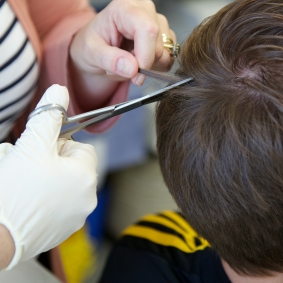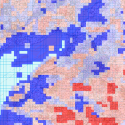Explore data and samples
We have a vast amount of biological samples and phenotypic, environmental, genetic and linkage data gathered from different cohort groups over the past 30 years. There are several ways you can explore this resource.
Explore available data
There are a number of simple ways to explore the data that is available for research:
- Our interactive timelines summarising the timepoints at which data has been collected in each participant group
- Our variable search tool, which allows simple searching across variable names and labels to help with identifying what data might be available.
- Our data dictionary (zip file), which includes detailed information, including frequencies, on all the data that are currently available, organised by timepoint and participant
- Our variable catalogue (zip file) - a simple list of all ALSPAC variable names and labels that are available, grouped according to data source and timepoint
External search options for exploring our data include:
- The CLOSER Discovery website
- The Catalogue of Mental Health Measures
- The Dementias Platfrom UK (DPUK) Data Portal
- The UK Tissue Directory
- Birthcohorts.net
- The HDRUK Innovation Gateway
- Maelstrom Research
If we have the data and samples you require, you can make an access request.
Explore external datasets
A number of ALSPAC datasets can be accessed externally, without the need for project proposals or exec permission, for specific research or for training purposes. A list is available here.
Cohort profiles
We have published cohort profiles for all generations of the study providing details on recruitment and representativeness.
Data summaries
-
Questionnaires
Participants have completed a large number of questionnaires covering a wide range of topics.
-
Clinical measures
Participants have provided data and samples via hands-on assessment in clinic at multiple time points.
-
Biological resources
Participants have donated a range of samples, including blood, urine, hair, nails, saliva and teeth.
-
Data derived from biological samples
A large amount of information has been derived from our biological resources.
-
Linkage to routine health and social records
Participant data has been linked with a variety of external data sources (for example, GP records and education records).
-
Natural and built environment data
Data have been collected relating to participants natural and built environment. Additional environmental exposure data can be linked using geocoded lifecourse residential addresses.
-
Children of the Children of the 90s (G2)
Many of our original participants have become parents themselves. We are now collecting information about the health and lives of their children (G2), extending ALSPAC to become a unique three-generation study.
-
Children of the 90s (ALSPAC) study history
More than 1,000 boxes of records documenting the ALSPAC study from its early planning stages in the 1980s to the mid 2000s, including hard copies and electronic records.
-
Our timeline
Click to view an interactive timeline of the data which has been collected from the partners of original study mothers at various points throughout the study.
If you cannot find the information you are looking for, or would like to talk to a member of our team about accessing data or samples, please email alspac-data@bristol.ac.uk (data) or bbl-info@bristol.ac.uk (samples).
Submit a research proposal
Our online proposal system is now closed for maintenance. A new, improved version will be available from January 6th. If you would like to read more about the changes we are introducing, they are summarised below.
If you have a time critical request that needs attention before the Christmas break then please email alspac-data@bristol.ac.uk
More details are available here: Changes to OPS
Useful links
Recent data releases
1. Broad Institute: ~2900 G1
2. Sanger Institute: _8500 G1s and ~3200 G0s prioritising trios.









.jpg)